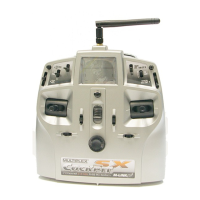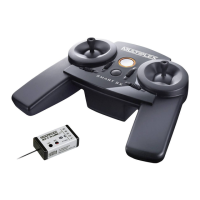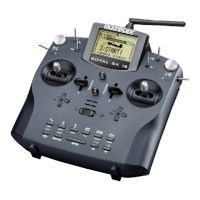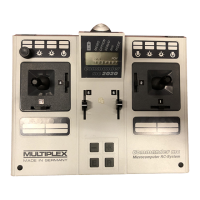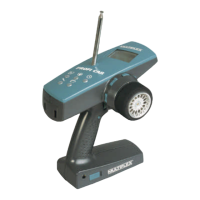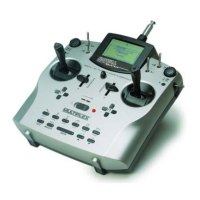What is differential, and why is it necessary?
When you give an aileron command, one aileron
moves up, the other down. Depending on the camber
of the wing airfoil, the braking effect of the down-going
aileron tends to be greater than that of the up-going
aileron. This phenomenon counteracts the turn by
causing the aircraft to yaw in the opposite direction, but
it can be corrected by reducing the travel of the down-
going aileron. The term differential is used to describe
the situation where the ailerons have different travels
up and down.
Differential in practice:
The degree of differential required for a particular
model is usually stated in the building instructions. If
this is not the case, we suggest that you set the down-
travel to around half of the up-travel, i.e. 50% differen-
tial.
Aileron differential is not usually required with symmet-
rical wing sections.
Many radio control transmitters offer aileron differential
as a value which can be varied by the user. In the
C
OCKPIT SX we have taken a slightly different route:
you can set the aileron travel to different values in both
directions. The effect on the model is identical.
In practice 50% differential is a good starting point for
many models. To set this up using the C
OCKPIT SX you
simply set the down-aileron travel to half the value for
up-aileron (e.g. 100 / -50%, 80 / -40%).
Moving to the Q ->Q menu:
4 to MENU, r (SETUP appears),
3 to MIXER, r (TH >S4 appears),
3 to AI->AI, r
Stick left: Stick right:
right aileron right aileron
down up
The current percentage figure flashes. You can now
use the 3-D digi-adjustor to set a value within the range
-100% to 100% in 1% increments.
If you hold the stick at one end-point, you can observe
the effect of any change you make by watching the
right-hand aileron (servo 5).
In our example the down-aileron travel (-50%) is half
that of the up-aileron travel (100%). This corresponds
to 50% aileron differential.
A brief press r on the 3-D digi-adjustor concludes the
process. The value is stored.
13.8.3. “Ailerons raised” as landing aid
(mixing SPOILER into AILERON)
Menu: (
MIXER) SP ->AI
“Up-aileron” is popular amongst many glider flyers as a
method of losing height on the landing approach. In this
case the up-aileron travel is generally greater than that
required for turning the model using the aileron stick.
The landing aid is controlled by the SPOILER transmit-
ter control. In modes 1 to 4 (Î MODE in the SETUP
menu) this is the right-hand slider. In modes 5 to 8
SPOILER is controlled using the stick.
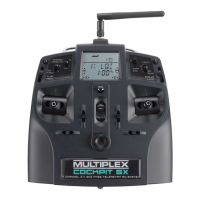
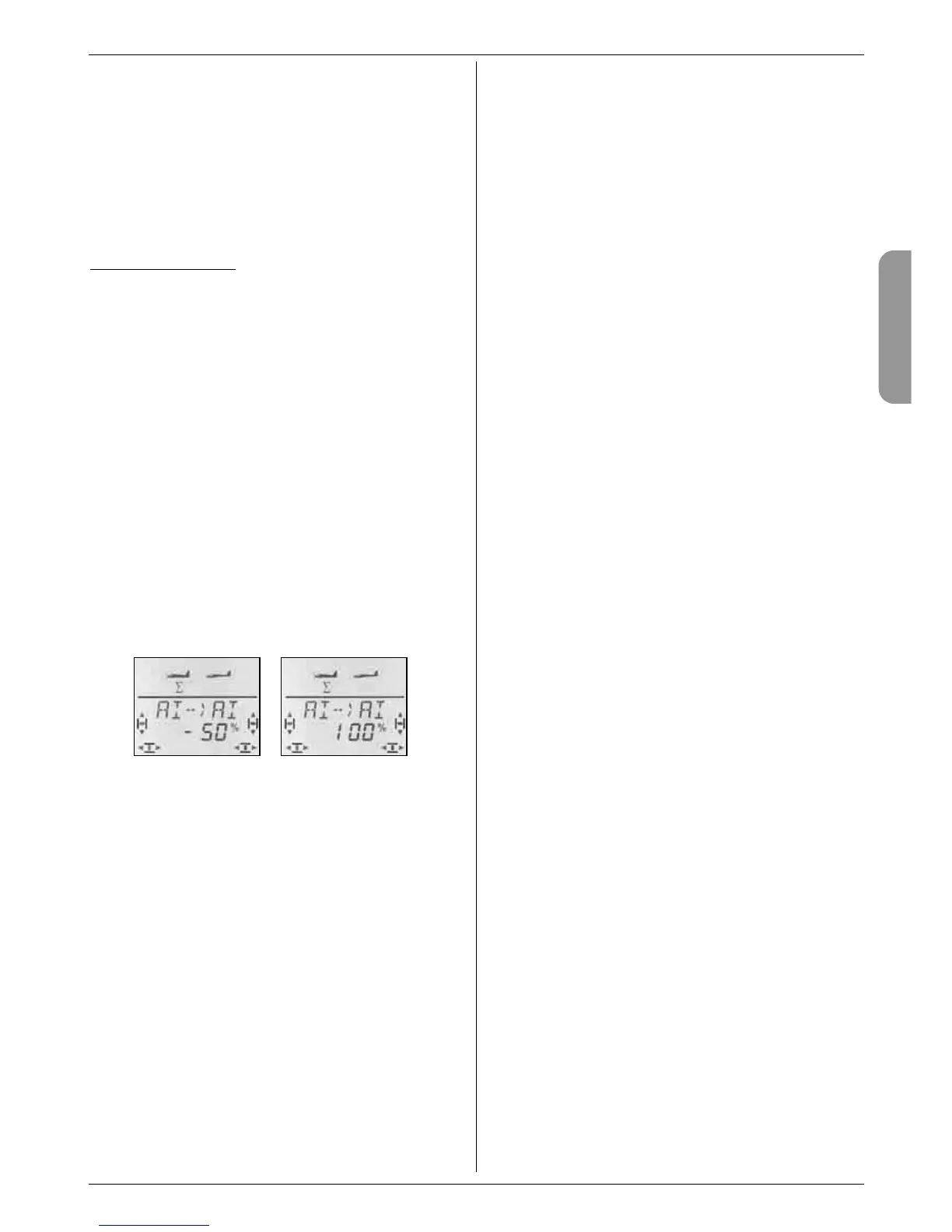